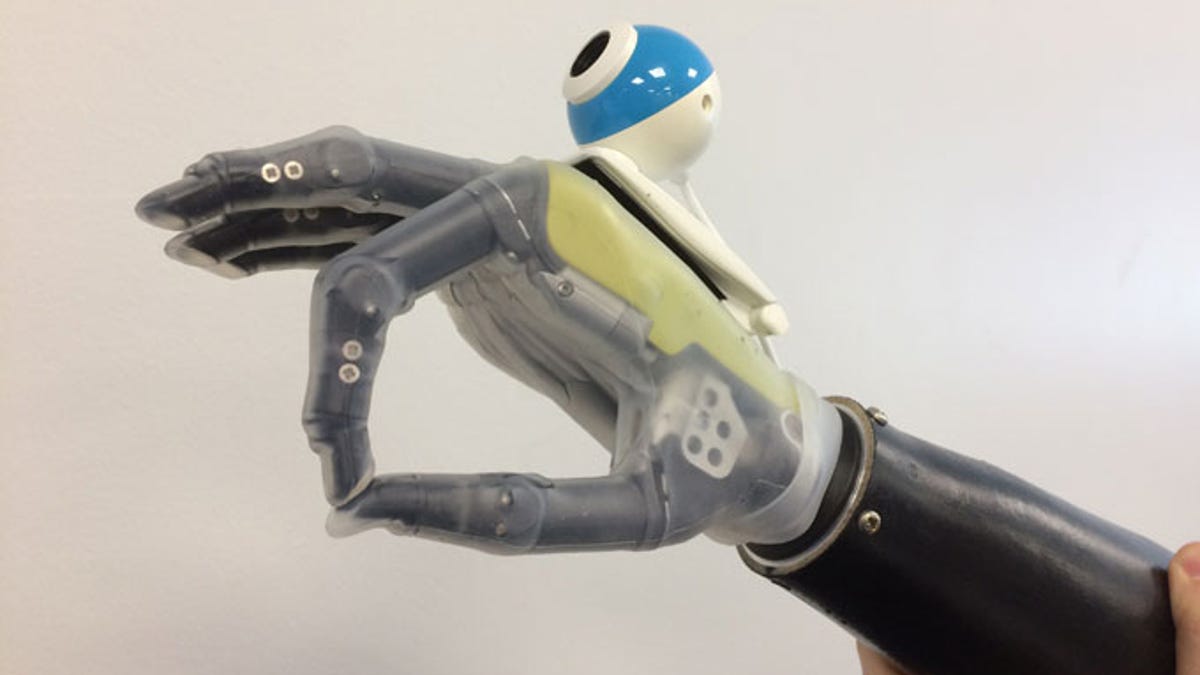This prosthetic hand sees what's in front of it
A prosthetic hand uses a mounted camera to "see" objects and speed up the reaction times to sync with the wearer.

Mind-controlled robotics look like the future of prosthetics -- but what if your prosthetic limb has a mind of its own?
A team of researchers at Newcastle University has developed a hand that is able to "see" objects in front of it using a simple Logitech webcam, and respond via software to assess and grasp them. Their research was published this week in the Journal of Neural Engineering.
"Using computer vision, we have developed a bionic hand which can respond automatically," said co-author Kianoush Nazarpour, senior lecturer in Biomedical Engineering. "In fact, just like a real hand, the user can reach out and pick up a cup or a biscuit with nothing more than a quick glance in the right direction."
The problem with the current crop of prosthetics, which are controlled via the electrical signals sent to the limb's muscles from the brain, the team asserts, is that they don't respond quickly enough.
Nazapour's team, however, said their hand is much more intuitive. They trained it using neural network software to recognise a variety of objects, and what sort of grip is required for those objects, such as the difference between a stick, a TV remote and a mug. Moreover, it can recognise the grasp required for specific objects it hasn't encountered before, using the camera to "see" them and then automatically pick the most appropriate grasp.
The team has trialed the faster technology with two amputee volunteers previously using split-hook prosthetics. Now, the team is looking to offer the hand to patients at Freeman Hospital in Newcastle to develop it further. The ultimate aim of the research is a bionic hand that can sense pressure and temperature.
"It's a stepping stone towards our ultimate goal," Nazarpour said. "But importantly, it's cheap and it can be implemented soon because it doesn't require new prosthetics -- we can just adapt the ones we have."
Tech Culture: From film and television to social media and games, here's your place for the lighter side of tech.
Batteries Not Included: The CNET team shares experiences that remind us why tech stuff is cool.

